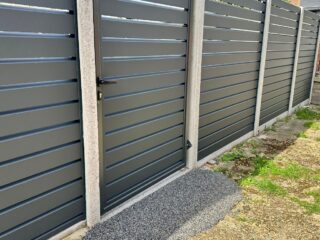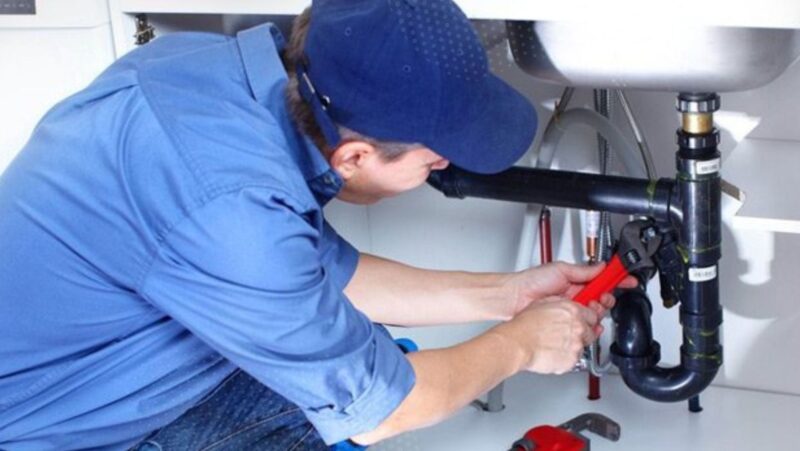
The home improvement industry thrives on trust, visual appeal, and the promise of a better living space. In today’s digital landscape, reaching potential clients effectively requires a sophisticated understanding of online advertising. Meta Ads For Home Improvement offers a powerful platform to connect with homeowners actively seeking renovations, repairs, and upgrades. This comprehensive guide delves into the intricacies of leveraging Meta’s advertising capabilities to elevate your home improvement business, attract high-quality leads, and cultivate lasting customer relationships.
Understanding the Power of Meta’s Ecosystem for Home Improvement
Meta, encompassing Facebook and Instagram, boasts billions of active users, providing an unparalleled audience reach for home improvement businesses. Unlike traditional advertising methods, Meta Ads offer granular targeting options, allowing you to pinpoint specific demographics, interests, behaviors, and even life events relevant to your ideal customer.
Imagine targeting homeowners in your local area who have recently shown interest in kitchen remodeling or have liked pages related to bathroom renovations. This precision ensures your advertising budget is spent reaching individuals with a genuine need for your services, maximizing your return on investment.
Furthermore, Meta’s visual-centric platforms are perfectly suited for showcasing the transformative power of home improvement projects. High-quality images and videos of completed renovations, before-and-after transformations, and testimonials from satisfied clients can effectively capture attention and build trust. The interactive nature of these platforms also allows for direct engagement with potential customers through comments, messages, and interactive ad formats.
Crafting a Winning Meta Ads Strategy for Home Improvement
A successful Meta Ads strategy for home improvement requires careful planning and execution. Here’s a step-by-step approach to guide you:
1. Defining Your Target Audience with Precision:
Before launching any campaign, it’s crucial to define your ideal customer profiles. Consider factors such as:
- Demographics: Age, location, income level, education, household size.
- Homeownership: Are they homeowners or renters? What is the age of their property?
- Interests: What are their hobbies? What pages do they like on Facebook and Instagram? Are they interested in interior design, gardening, DIY projects, or specific home improvement niches like solar panels or smart home technology?
- Behaviors: Have they recently searched for home renovation services online? Are they engaging with content related to home improvement? Have they recently moved or are planning to move?
- Life Events: Are they expecting a new family member? Are they recently retired and looking to age in place? Are they planning a major home renovation?
Leveraging Meta’s detailed targeting options allows you to create specific audience segments for different services. For instance, you might target younger homeowners with an interest in modern design for kitchen remodeling services, while focusing on older homeowners interested in accessibility modifications for bathroom renovations.
2. Setting Clear and Measurable Objectives:
What do you want to achieve with your Meta Ads? Define specific, measurable, achievable, relevant, and time-bound (SMART) goals. Examples include:

- Increasing website traffic for specific service pages.
- Generating a specific number of leads through contact forms or calls.
- Boosting brand awareness within your local service area.
- Driving engagement with your content, such as videos showcasing past projects.
- Acquiring new customers for specific home improvement services.
Having clear objectives will guide your campaign setup, ad creative development, and performance tracking.
3. Choosing the Right Ad Formats to Showcase Your Expertise:
Meta offers a variety of ad formats, each with its strengths for showcasing home improvement services:
- Image Ads: High-quality photos of completed projects are essential. Focus on visually appealing transformations and highlight key features. Use compelling captions that describe the work and include a clear call to action.
- Video Ads: Showcase the process of a renovation, provide before-and-after comparisons, or feature customer testimonials. Short, engaging videos that capture attention quickly are highly effective. Consider using video slideshows of multiple images.
- Carousel Ads: Display multiple images or videos in a swipeable format, allowing you to showcase different aspects of a project or a portfolio of your work. Each card can have its own headline, description, and link.
- Collection Ads: Combine a cover image or video with several product images below. This format is ideal for showcasing a range of services or specific product installations (e.g., different types of windows or flooring).
- Instant Experience Ads (formerly Canvas Ads): Create immersive, full-screen experiences that load instantly after someone clicks on your ad. This format allows you to combine images, videos, text, and call-to-action buttons in an engaging way to tell a complete story about your services.
- Lead Generation Ads: Capture leads directly within the Meta platform without requiring users to visit your website. These ads feature customizable forms where potential clients can provide their contact information. This is particularly effective for mobile users.
- Dynamic Ads: If you have a catalog of products (e.g., for kitchen cabinets or bathroom fixtures), dynamic ads can automatically show relevant products to people who have previously interacted with your website or app.
Experiment with different ad formats to see which resonates best with your target audience and helps you achieve your objectives.
4. Crafting Compelling Ad Creative and Messaging:
Your ad creative is the first impression potential clients have of your business. It needs to be visually appealing, informative, and persuasive.
- High-Quality Visuals: Invest in professional photography or videography to showcase your best work. Ensure images are well-lit, in focus, and highlight the quality of your craftsmanship.
- Clear and Concise Headlines: Grab attention quickly with headlines that highlight the benefit to the customer (e.g., “Transform Your Kitchen Today,” “Expert Bathroom Remodeling Services”).
- Compelling Descriptions: Provide more details about your services, highlight your unique selling propositions (e.g., years of experience, specialized skills, use of premium materials), and address potential pain points.
- Strong Calls to Action: Tell users exactly what you want them to do (e.g., “Get a Free Quote,” “Learn More,” “Contact Us Today,” “View Our Portfolio”). Use action-oriented language.
- Local Relevance: Incorporate your service area into your ad copy to attract local clients (e.g., “Home Renovation Experts in [Your City]”).
- Address Specific Needs: Tailor your messaging to the specific service you’re advertising and the needs of your target audience segment. For example, an ad for energy-efficient window replacements might highlight cost savings and environmental benefits.
5. Implementing Effective Targeting and Budgeting:
Meta’s targeting options are a powerful tool, but they need to be used strategically.
- Layer Targeting: Combine different targeting options to narrow down your audience and reach the most relevant individuals. For example, target homeowners in a specific zip code who have shown interest in kitchen remodeling and have an income level within a certain range.
- Lookalike Audiences: Reach new people who are similar to your existing customers or website visitors. Meta can create lookalike audiences based on your customer lists, website traffic, or engagement on your Facebook and Instagram pages.
- Custom Audiences: Upload your customer lists (email addresses, phone numbers) to target existing clients with special offers or to exclude them from acquisition campaigns. You can also create custom audiences based on website visitors or app users.
- Budget Allocation: Determine your advertising budget based on your goals and the potential return on investment. Meta allows you to set daily or lifetime budgets. Start with a manageable budget and gradually scale as you see positive results.
- Bidding Strategies: Choose a bidding strategy that aligns with your objectives. Options include automatic bidding (Meta optimizes for results within your budget) and manual bidding (you set the maximum amount you’re willing to pay per click or impression).
6. Optimizing Your Landing Pages for Conversions:
If your ads direct users to your website, ensure your landing pages are optimized for conversions.
- Relevance: The landing page should be directly relevant to the ad they clicked on. If your ad promotes kitchen remodeling, the landing page should focus on your kitchen remodeling services.
- Clear Value Proposition: Immediately communicate the benefits of your services and why a potential client should choose you.
- Easy Navigation: Make it easy for users to find the information they need and take the desired action (e.g., fill out a contact form, request a quote, browse your portfolio).
- Mobile-Friendliness: Ensure your landing pages are responsive and load quickly on all devices, especially mobile.
- Clear Call to Actions: Include prominent and persuasive calls to action on your landing page.
- Build Trust: Include testimonials, reviews, and guarantees to build credibility.
- Contact Information: Make it easy for potential clients to contact you by displaying your phone number, email address, and contact form prominently.
7. Tracking, Analyzing, and Optimizing Your Campaigns:
Continuous monitoring and optimization are crucial for maximizing the effectiveness of your Meta Ads.
- Track Key Metrics: Monitor metrics such as impressions, clicks, click-through rate (CTR), cost per click (CPC), leads generated, cost per lead, and conversion rate.
- Utilize Meta Ads Manager: Regularly review your campaign performance in Meta Ads Manager to identify what’s working and what’s not.
- A/B Testing: Experiment with different ad creatives, headlines, descriptions, calls to action, and targeting options to see which combinations perform best.
- Audience Insights: Analyze the demographics and interests of the people who are engaging with your ads to refine your targeting.
- Conversion Tracking: Implement Meta Pixel on your website to track conversions (e.g., form submissions, phone calls) that result from your ads. This data is essential for measuring your return on investment.
- Iterate and Refine: Based on your performance data, make adjustments to your campaigns to improve results. This might involve pausing underperforming ads, adjusting your budget allocation, or refining your targeting.
Leveraging the Visual Power of Instagram for Home Improvement:
Instagram, with its strong emphasis on visual content, is an invaluable platform for showcasing the aesthetic appeal of your home improvement projects.

- High-Quality Imagery and Videos: Focus on stunning before-and-after photos and videos that highlight the transformation you can deliver.
- Instagram Stories: Use Stories to share behind-the-scenes glimpses of your projects, client testimonials, quick tips, and engaging polls or Q&A sessions.
- Reels: Create short, engaging video content showcasing your expertise, project highlights, or even time-lapses of renovations.
- Influencer Marketing: Collaborate with local home decor or lifestyle influencers to reach a wider audience and build trust.
- Hashtags: Use relevant hashtags (e.g., #homerenovation, #kitchenremodel, #bathroomdesign, #[yourcity]homeimprovement) to increase the visibility of your content.
- Instagram Ads: Utilize Instagram’s ad formats (image ads, video ads, carousel ads, Stories ads, Explore ads) to reach your target audience with visually compelling content.
Building Long-Term Customer Relationships:
Meta Ads can not only help you acquire new customers but also nurture existing relationships.
- Retargeting: Reach out to people who have previously interacted with your website or social media pages with targeted ads. Remind them of your services or offer special promotions.
- Customer Appreciation Campaigns: Run ads thanking your past clients or offering them exclusive discounts for future projects or referrals.
- Content Marketing: Share valuable content related to home improvement tips, trends, and maintenance advice on your Facebook and Instagram pages to establish yourself as a trusted expert.
- Engage with Your Audience: Respond promptly to comments and messages, fostering a sense of community and building relationships.
Navigating the Evolving Landscape of Meta Ads:
The digital advertising landscape is constantly evolving, and Meta Ads is no exception. Stay updated on the latest features, best practices, and algorithm changes to ensure your campaigns remain effective.
- Follow Meta for Business: Stay informed about new ad formats, targeting options, and platform updates.
- Analyze Industry Trends: Keep an eye on trends in the home improvement industry and adapt your advertising strategies accordingly.
- Continuous Learning: Invest in learning resources and training to enhance your Meta Ads skills.
Conclusion: Transforming Your Home Improvement Business with Meta Ads
Meta Ads For Home Improvement offers a powerful and versatile platform to connect with your ideal clients, showcase your expertise, and drive significant growth for your business. By understanding the nuances of targeting, ad formats, creative development, and performance tracking, you can craft effective campaigns that generate high-quality leads, build brand awareness, and cultivate lasting customer relationships. Embrace the visual power of Meta’s platforms, stay adaptable to its evolving landscape, and unlock the full potential of digital advertising to elevate your home improvement business to new heights in the dynamic world of online marketing. The key lies in a strategic approach, consistent effort, and a commitment to delivering exceptional value to your target audience.












